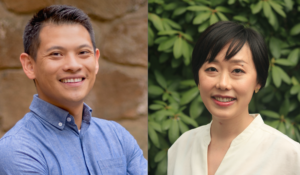
Teaching as a Response to Lives in Motion - Part 1
How can we teach trauma and religion? If part of the human experience is the reality of imperfection, limitation, and wounding—if loss and grief are inevitable in our lives, how can we better address them in our classroom?
In this first part, we want to speak to the importance of recognizing the immense suffering which in so many cases is unresolvable yet integral to human experience. Japanese philosopher Nishida Kitarō calls life a “continuity of discontinuities”[i] which permeate reality itself. This sensibility urged us to reconsider the way we typically begin each semester with “learning expectations”: it asks us to instead cultivate a posture of “collective intentions,” especially when we address trauma in our classroom. In a sense, trauma-integrating pedagogy calls for a radical alternative pedagogical practice that propels us to reconceptualize teaching processes and outcomes in a longer time frame. We believe that this practice humanizes both instructors and students and moves us toward more holistic ways of relating.
According to Jim, the intention of a contemplative community can be known as modeling to each other “a sincerity of heart,” which is the doorway to spiritual growth in a person’s life. When our intentions guide us, it does not guarantee an outcome but rather gives a posture of receptivity to witness each other’s (often subtle) “awakening”[ii]—an experience of being interrelated with that which is beyond our own individual experiences. Together, the participants are invited to tap into the unknown. Spiritual awakening is a relational journey that requires intention, devotion, teaching, and community, and these foundations lead us into both the depths and beyondness of love itself.
Through an emphasis on collective intentions rather than expectation, we invite a more gentle and nurturing way to engage the intense materials of our classes, whether they are stories of violence in sacred texts, literature, and ongoing incidents, or the woundedness that Christian mystics often perceive as invitations to contemplate with a spirit of tenderness and to write down first-person narratives.
Practically speaking, cultivating collective intentions invites us to read texts in a spirit of inner silence and deep listening, which allows the text to speak to the reader, not as mere information. Emphasis on interior listening guides students to share what arises in them, however subtly, through writing and class conversation. We then transition to community sharing which must be engaged nonjudgmentally in the class, even if higher education might frame this practice as anti-intellectual.
Herein, we are beginning to see the challenges that are birthed from an attachment to learning outcomes and evaluation processes, which are often required by institutions. We recognize that those may inadvertently reproduce classrooms that do not allow us to adequately address trauma. Of course, evaluations and outcomes are important. But how do we accurately “assess” learning as deep relational “awareness” which includes trauma, justice, and religion but is not bound exclusively to it?
Perhaps a trauma integrating pedagogy calls us to co-liberate ourselves a bit from our attachment to outcomes, which are part of the social norm of productivity. If we imagine our trauma-integrating classroom as a relationally accountable container, we also need to reimagine assessments and assignments, in order to find collective ways to encourage the interior movements of each other. While this may seem to be a challenging negotiation with our institutions, we believe that it is an essential update to a pedagogy, especially in teaching trauma in our times full of massive violence, forced migration, and climate intensity. A pedagogy of collective intentions allows us to respond to and think with the lives in motion—actual human beings—within our class, within ourselves, and in this rapidly changing world. It is a pedagogy of the continuous journey of learning to trust ever more deeply in ourselves, the O/other, and the uncertain process itself.
A pedagogy of communal intention has convinced us that building a nonviolent classroom is essential in approaching difficult topics such as trauma and violence, and in our classroom practice we learn to place high value on flexibility and receptivity. For instance, silence and contemplation can be a sign of active learning. Rather than focusing on dissemination and regurgitation of information, we want to encourage students to speak in and listen to their own authentic voices. Simultaneously, instructors must always remind themselves that we cannot control or impose students’ learning or “awakening”—rather, we are powerless to empower students to heal trauma, let alone to heal it within a semester. Perhaps nothing external will seem to result from our class other than students becoming sensitive to themselves and others. But perhaps in a time of massive collective trauma, this is one of the most important lessons of all.
As ones who are called to teach theology and religion, we do not want to abandon the hope that our learning, or awakening, may come alive within students, or for ourselves much later. In an age that constantly demands immediate results, we must remind ourselves that learning is a lifelong process, particularly regarding difficult topics. Over and over, we must return to a humble spirit of sincerity that we are all imperfect beings who are continually learning to take skillful action in a world that is unstable, unpredictable, and wounded. And saying yes, we are invited to be and become patient and persevering one step at a time. Part two of our blog will address this topic in further detail.
[i] See “Theory of the Historical World” at
https://plato.stanford.edu/entries/nishida-kitaro/#TheHisWor.
[ii] A term borrowed from James Finley, which he describes as the purpose of the contemplative life and details in The Contemplative Heart (Notre Dame, IN: Sorin Books, 2000).
What is the significance of recognizing immense suffering in human experience, according to the passage?